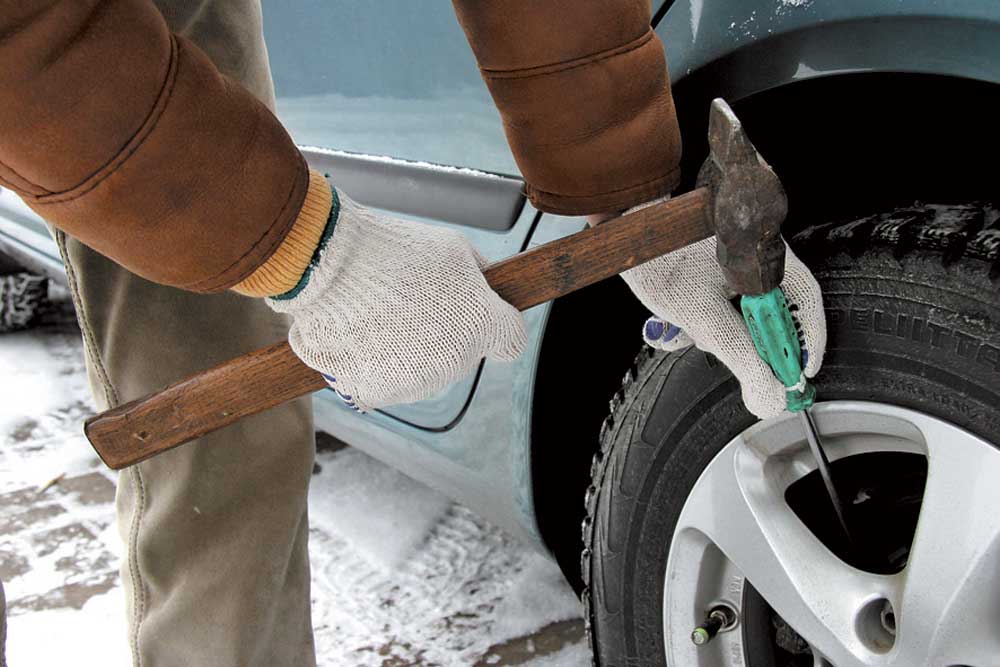
Why do brake pads wear unevenly, where to look for the cause
Content
The brake pads and discs will last as long as possible only if the wear occurs equally on the outer and inner linings, and also symmetrically on the right and left sides of the car. It is almost impossible to achieve uniformity along the axes, but this is not included in the design.
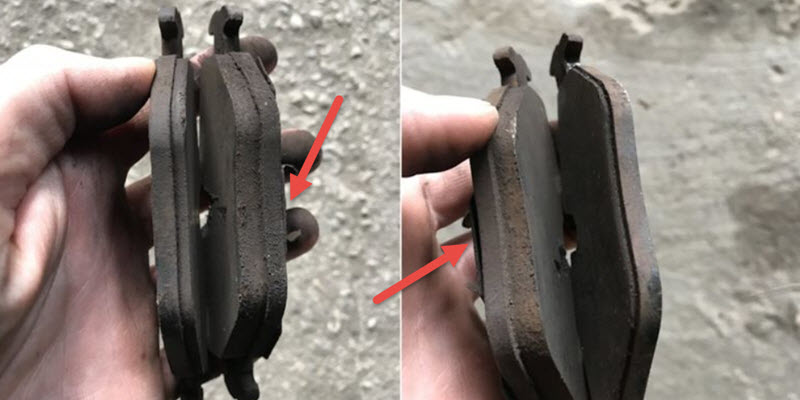
This near-ideal material consumption, in addition to reducing operating costs, also contributes to safety.
Machine pull under braking or dynamic disc warping can suddenly and unexpectedly cause the driver to lose stability and control.
What is the service life of brake pads
It is pointless to talk about the average value of the durability of the pads by mileage. Many factors influence this:
- Combination of characteristics of lining materials and surface of discs or drums in the factory configuration;
- driving style of the driver, how often he uses the brakes and at what speeds, overheating, use of engine braking;
- the owner's preferences when choosing replacement pads, both economic and operational, for many, the subjective impressions of the brakes are more important than the actual efficiency, including the wear rate;
- the condition of the road, the presence of abrasives, dirt and active chemicals;
- the predominance of uniform movement or ragged acceleration-deceleration mode, depending on the terrain;
- technical condition of the elements of the brake system.
Nevertheless, many average the indicator. It is approximately believed that the pads will require replacement after 20 thousand kilometers.
Rather, it can be considered an average indicator for civilian cars.
Common Causes of Uneven Pad Wear
Each problem has its roots, we can identify the main ones. Often, the cause can be determined by specific features of uneven wear.
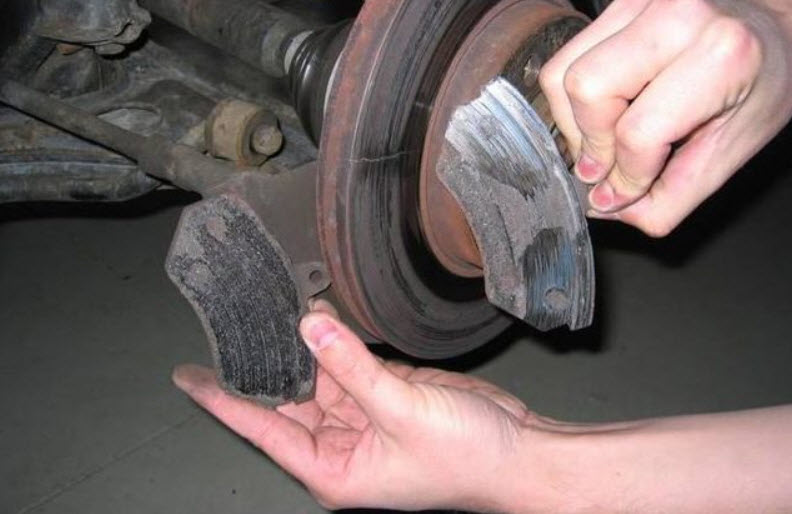

When only one of the pads wears out faster
In each pair of disc brake pads, it is assumed that they will be pressed against the disc with the same force, and move away after releasing synchronously and at the same distance.
When malfunctions occur, these conditions are not met, as a result, one of the pads begins to wear out faster. Either it experiences more pressure, taking on the main load, or it is not retracted, continuing to wear out without pressure in the brake line.
Most often, it is the second case that is observed. The difference in down pressure is unlikely even with an asymmetrical mechanism with a floating passive caliper. But abduction can be difficult due to corrosion or wear (aging) of parts. The block is always partially pressed, the friction is small, but constant.
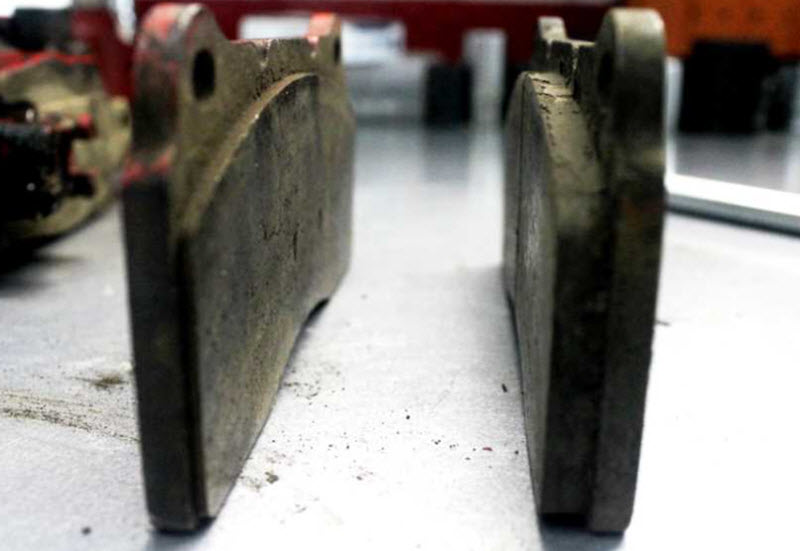

This happens when the inner surface of the brake cylinder is corroded or the guides are worn. The kinematics is broken, the block hangs in the pressed state or even wedges.


Watch this video on YouTube
It helps to replace the caliper repair kit, usually a piston, seals and guides. You can get away with cleaning and lubricating, but this is less reliable. Grease is used only special, high-temperature. In severe cases, you have to change the caliper assembly.
Wedge erasure
Normally, lining wear at different rates across the working area occurs in powerful multi-cylinder brakes. Over time, they cease to create a uniform pressure, despite the uniquely equal fluid pressure.
But distortions of the bracket are also possible with a mechanism with a single piston due to corrosion or heavy wear. You have to replace the caliper or parts of the guide mechanism.
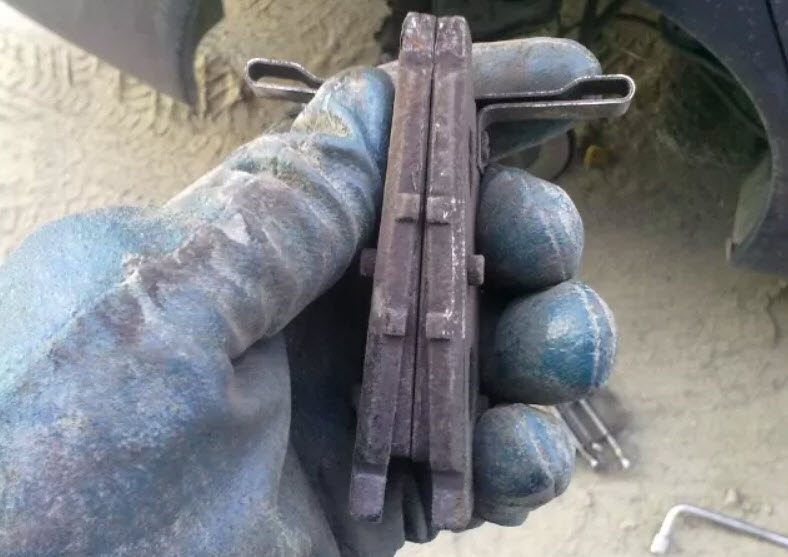

The wedge can be located both along and across the pads. This is due to the installation of new pads on an unevenly worn disc, which should be replaced or machined.
A pair of pads on the right rubs faster than on the left
It may be the other way around. On the right, this happens more often due to right-hand traffic, the closer to the curb, the more water and dirt gets into the friction zone.
But this is not the only reason, there can be many:
- due to the same wet dirt, accelerated corrosion of parts on one side occurs;
- one of the mechanisms was serviced more carefully and competently;
- naturally, parts do not age at the same time;
- defective parts;
- pressure difference due to ABS or air in the system;
- deformation of parts due to overheating or mechanical causes;
- aging of the inner lining of the brake hoses.
As a rule, this situation can be diagnosed early by the stable pull of the car to the side under braking.
Uneven wear of drum pads
The main operational differences of the drum mechanism are the fundamental difference between the operation of the front and rear pads.
Their synchronous operation is structurally provided, but only under ideal conditions of equal wear. Over time, one of the pads begins to experience geometric wedging, and the pressure on the other is determined only by pressure on the piston.
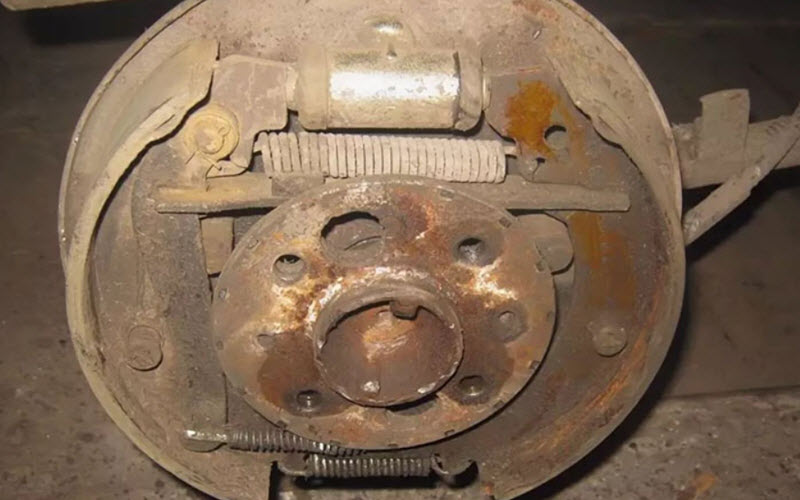

The second reason is the operation of the handbrake through the asymmetrical drive of the levers and the spacer bar. Violation of the adjustment or corrosion leads to different pressure, as well as non-simultaneous release.
The handbrake mechanism requires regular maintenance and replacement of cables. Not only pads are changing, but also a set of levers, springs, slats. The drums are also examined for wear limit on the inner diameter.
Why do rear pads wear faster than front pads?
The rear brakes are much less powerful than the front ones, due to the dynamic redistribution of the weight of the machine on the front axle.
This is controlled by mechanical or electronic brake force controls to prevent blockages. Hence the theoretical ratio of pad life is about one to three in favor of the rear.


Watch this video on YouTube
But two factors can influence the situation.
- First, much more dirt and abrasives fly to the rear friction pairs. Often, it is because of this that more protected, albeit less effective drums are placed at the back.
- The second is the effect of the handbrake in those designs where the main and parking systems use the same pads. Its malfunctions lead to braking on the go and rapid wear.
There are also cars where the power of the front brakes is so much higher than that of the rear that the pads end up about the same. Naturally, any deviations can lead to a reduction in the durability of the rear.
